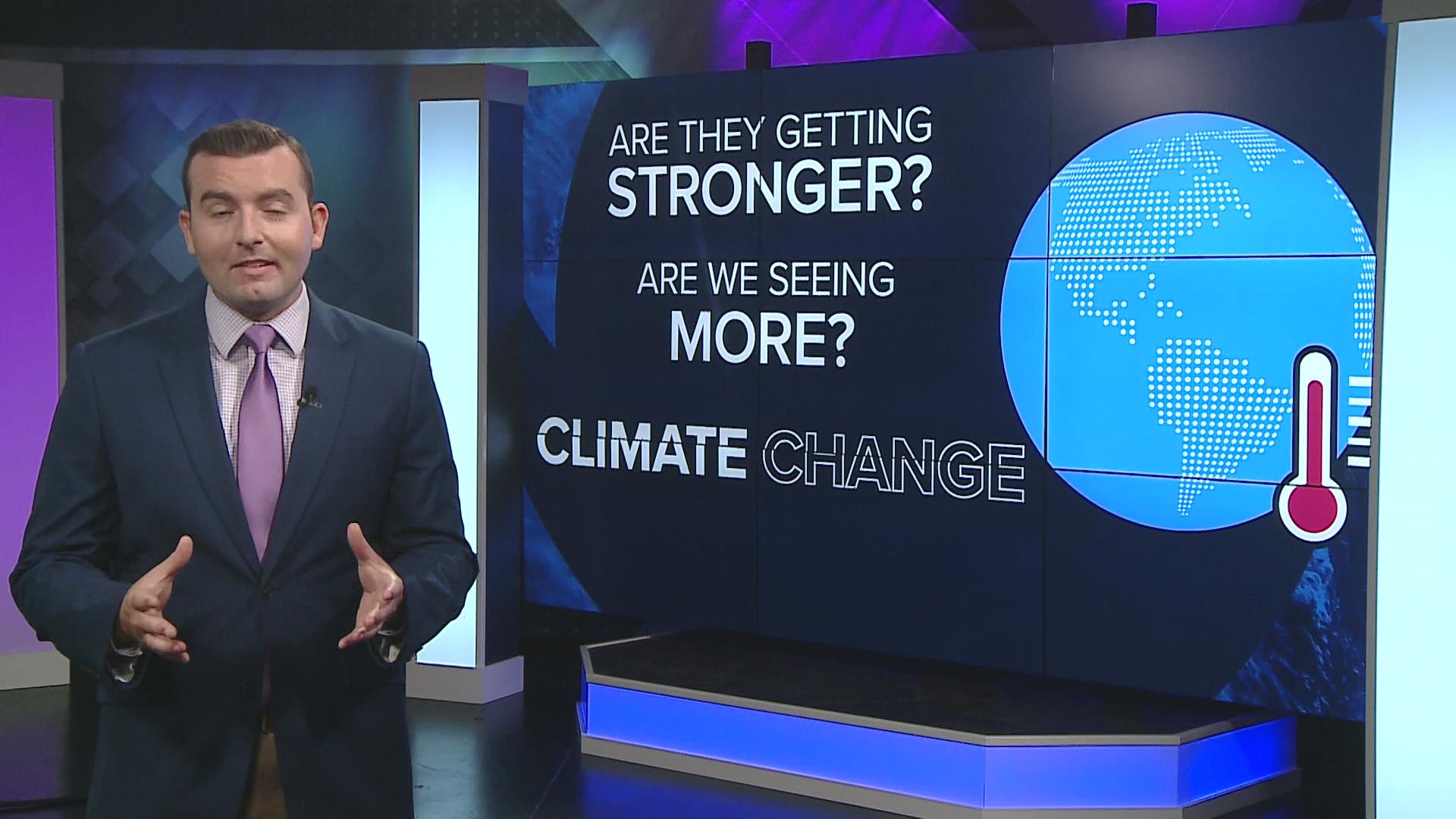MAINE, USA — In the last few years, a lot of conversation has been happening about the strength and number of hurricanes.
Are they getting stronger, are we seeing more – and is it because of climate change?
There are two main questions when talking about climate change and hurricanes: will hurricanes become more frequent and will hurricanes become more intense as the climate warms?
The answers might surprise you.
Data suggests that yes, oceans and our atmosphere continue to warm, but it also shows that wind shear will begin to increase. For tropical systems, these are conflicting factors.
Wind shear can rip hurricanes apart, or even keep them from forming in the first place. That suggests the frequency of weaker hurricanes or tropical storms could drop over time.
However, the storms that *do* form could become stronger, thanks to more energy from warmer ocean water.
There are signs already that hurricanes are intensifying more rapidly. Hurricane Ida did so while traveling over the very warm Gulf of Mexico. It is the fourth category four or five hurricane to make landfall on the Gulf Coast in the last four years.
That said, the study of tropical systems and climate change is complicated because of a lack of historical data.
It could take decades before we truly know the effects of climate change on hurricanes themselves.
We do know that climate change is playing a role in the impact of all storms – including hurricanes and nor'easters. Sea level rise is making our coastline more vulnerable to flooding from storm surge. And a warmer world can hold more water, resulting in heavier rainfall events, even from hurricanes that have weakened into tropical storms or depressions.

